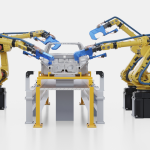Cleo’s 2025 Supply Chain Earnings Impact Report draws a direct link between supply chain maturity and stock market performance. A five-year analysis of 1,000 earnings calls reveals that companies with advanced capabilities in automation, real-time visibility, and supplier diversification consistently delivered stronger post-call market gains. As the frequency and complexity of supply chain shocks grow, investor expectations are shifting – from cost efficiency to crisis-readiness.
Supply Chain Strategy Sets the Pace
In a volatile world, companies can no longer treat the supply chain as a back-office function. According to the report, supply chain maturity has become a decisive factor in market performance—especially in the critical seven-day window following earnings calls.
Cleo’s analysis found that 46% of firms experiencing post-call stock declines cited supply chain-related issues, ranging from delays to visibility failures. Meanwhile, firms that saw gains often credited tight control over supplier onboarding, backlog optimization, and technology-led efficiency improvements. The standout performers weren’t just managing supply chains—they were weaponizing them.
Notably, mentions of the supply chain in earnings calls rose from 2% in 2019 to 27% by 2022, signaling a sharp rise in executive-level awareness. The average recovery time for stock prices after a disruption stood at 176 days, underscoring the long shadow poor execution can cast on shareholder confidence.
For high-performing companies, success was rooted in proactive capability-building. These businesses leveraged digital twins, dynamic pricing, and demand-driven production models to boost resilience. Crucially, they treated order backlogs not as liabilities but as strategic assets—positioning them as signals of growth, not bottlenecks.
Disruption as a Divider and Driver
Cleo’s findings reveal a widening gap between companies that have internalized supply chain transformation and those still stuck in legacy thinking. Firms that underperformed typically faced visibility breakdowns, lacked pricing agility, and failed to adapt to post-pandemic realities. A common thread was technological inertia: organizations that had not integrated core systems or lacked real-time data flows struggled to act at speed.
By contrast, supply chain leaders integrated automation not just to cut labor, but to augment teams and create real-time responsiveness. Many shifted quickly into growth sectors—such as e-commerce and EVs—using nimble supply chains to accelerate time-to-market.
The report also highlights a critical investor pivot: companies are no longer judged solely on top-line growth, but on the underlying supply chain discipline that sustains it. With climate risk, trade uncertainty, and geopolitical instability shaping a new operating baseline, agility is fast becoming the lens through which operational competence is measured.
Supply Chain Maturity Signals Market Credibility
The findings from Cleo’s report reinforce a structural shift in how supply chain performance is perceived—both within organizations and by external stakeholders. Agility, once treated as a soft capability, is emerging as a measurable determinant of financial resilience. Importantly, the report does not suggest a single model for success, but rather highlights the compounding value of sustained investment in visibility, integration, and operational flexibility.
For supply chain leaders, the lesson is less about reacting to volatility and more about institutionalizing the capacity to navigate it. As capital markets increasingly reward operational foresight, supply chain maturity is no longer an internal metric—it is part of a company’s external narrative.





